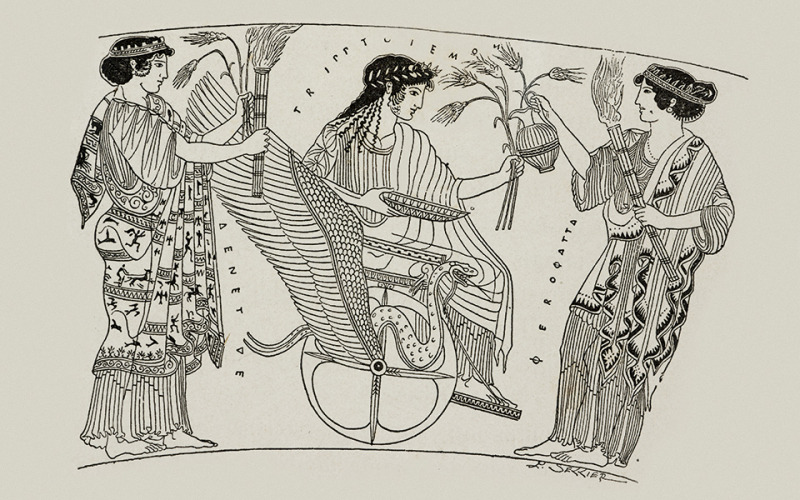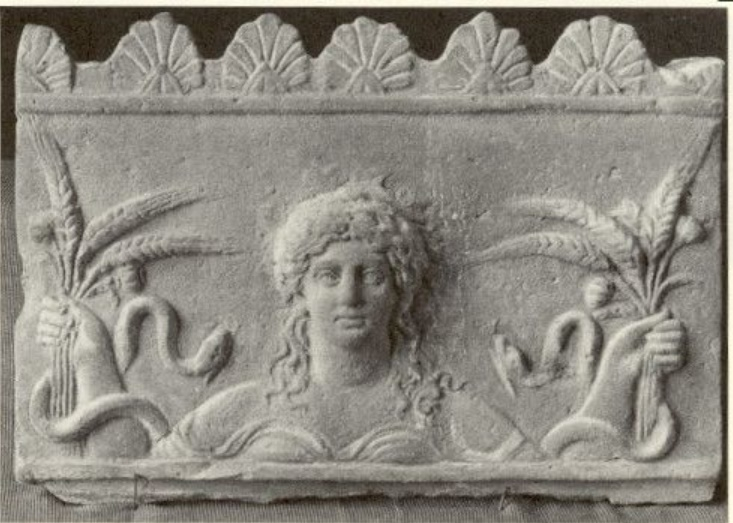Wheat
Soaking softened the wheat grains, which were then reduced into gruel or crushed into flour ( ἀλείατα aleíata) and kneaded and fashioned into loaves (ἄρτος ártos) or flatbreads, either plain or with cheese or honey. Leavening was known; the Greeks used an alkali (νίτρον nítron) and wine yeast as leavening agents later on. Dough loaves were baked at home on legs in a clay oven (ἰπνός ipnós).
Bread wheat, which was difficult to grow in Mediterranean climates, and the white bread it produced were identified with the aristocratic classes in the ancient Mediterranean, while the poor ate coarse brown bread made from emmer wheat and barley.
A simpler process entailed setting lighted coals on the floor and covering the mound with a dome-shaped lid (πνιγεύς pnigeús); when the embers were hot enough, they have brushed aside, and dough loaves were laid on the warm floor. The lid was then replaced, and the coals were gathered on the cover's side. This procedure is still practiced in Serbia and other Balkan countries, where it is known as crepulja or sač.
The stone oven was not invented until the Roman era. Solon, an Athenian statesman from the sixth century BC, recommended that leavened bread be saved for feast days. Leavened bread was offered at the market by the end of the 5th century BC, though it was expensive.












